We have added disc golf to our list of activities…
Pictures taken at Stevens Pass Disc Golf Course with Mountain Junkie Discs… PDGA Approved!
Disc Golf is One of Today’s Fastest Growing Sports
The sport of disc golf evolved as an offshoot of the many games spawned by the Frisbee® craze. The game started with people using Frisbees and aiming at targets made up of trees, trash cans, light poles, pipes, and whatever else was handy.
Disc golf is similar to regular golf; however, instead of using golf clubs and balls aiming for a hole, Disc Golf players use golf discs and aim for a Disc Pole Hole, a pole extending up from the ground with chains and a basket where the disc lands. The object of the game is to complete each hole in the fewest number of throws, starting from a tee area and finishing at the Disc Pole Hole. Generally, a course is 9 or 18 Disc Pole Holes long. Players start at “hole†one and complete the course in order, playing through to the last hole. The player with lowest total cumulative score wins.
Disc Golf differs from regular Golf in important ways. Disc golf courses can use a wide variety of terrain. Often times, land not suitable for other park activities or development is perfect terrain for a disc golf course. Disc golf is one of the best lifetime fitness sports. It is easy to learn, a healthy activity, and accessible to people of all ages and fitness levels. If you can throw a Frisbee® and you like to have fun, you can play disc golf.
“Disc Golf” as it is known today began with “Steady” Ed Headrick, the father of disc golf and modern day disc sports. Headrick was the driving force responsible for the modern era of Frisbee sports. Ed founded the International Frisbee Association, established the Junior Frisbee Championship, established and organized the World Frisbee Championship and went on to create and standardize the sport of Disc Golf.
Modern day disc golf started in the late 60’s. The early frisbee golf courses were “object courses”, using anything from trees, trash cans, light poles, chicken wire baskets, pipes to fire hydrants as targets. The roots of the sport begin when “Steady” Ed Headrick designed the modern day Frisbee (US Patent 3,359,678, issued 1966) while working for Wham-O Toys back in the 60’s. Captivated by the flight and feeling of control he could master with the Frisbee, Ed saw potential for the disc well beyond what anyone had envisioned or imagined. The game was formalized when Headrick invented the first Disc Pole Hole™ catching device, consisting of 10 chains hanging in a parabolic shape over an upward opening basket, (US Patent 4,039,189, issued 1975). The Disc Pole Hole™ became the equivalent to ball golf’s “hole” and was installed in the first standardized target course (what was then known as Oak Grove Park Pasadena, California). Ed had said one of his many inspirations for the “Disc Pole Hole™” invention was so he and his buddies could get on with playing instead of arguing over whether or not someone actually had hit one of the objects in their make shift object courses.
An excerpt from “revelation, “Frisbee Golf”by Ed Headrick
“Then an amazing revelation, all my buddies, all my staff at Wham-O, and most of my cult members and I were playing the game I was looking for. Frisbee Golf was right under my nose! Great marketing man right? A game where people would throw an expensive Frisbee into the ground every throw on purpose? Wow! What a market potential!It seems so easy, but what could possibly be better than walking through a beautiful park and throwing at trees, drinking fountains, open car windows and an occasional coed? Back to the drawing boards and 56 models later a contraption was born. Shazam! Chain! Like Moses and his cracked rules, chains without black leather and a whip. Chain, indestructible, flexible, a pleasant sound. I wish I had invented it, but chain was my answer. Hence the Mach I, II, III and twenty years of blood, sweat and tears.”
An Abbreviated History of Disc Golf
1 million B.C. E. to Present Day – by “Steady” Ed Headrick
The Discoblus
Disc golf in one form or another has been with us since the beginning of time. The early cavemen in their search for weapons to extend their ability to slay food probably found rocks before clubs. If they could kill something from a safe distance it would be much safer than a club or a sharp stick.
Test of skill were a necessary pastime, closest to the target sounds familiar! Flat rocks had a different flight and flew further than round objects, skipping flat stones on the water, throwing shields, Eureka! Then came the discus that Discoblus threw which certainly resembled a Frisbee.
“Scaling”
In the early steel age sharpened rings were thrown with devastating effect. They flew with accuracy, caused serious injury and looked like the modern Aerobie. Then came the ancient word “scaling” (to throw a thin flat object so that its edge cuts through the air). Pie pans, film can lids and toy flying saucers were the recent predecessors of the modern Frisbee which was invented in 1964 by Ed Headrick, US Patent 3,359,678. He also formed the International Frisbee Association which had over 112,000 members by 1972.
Early Frisbee Targets
Since that time disc golf evolved from man’s natural competitive nature. Early games used targets of trees, trash cans, light poles, chicken wire baskets, pipes, and coeds. The game was formalized when Headrick invented the first Disc Pole Hole catching device, consisting of 10 chains hanging in a parabolic shape over an upward opening basket, US Patent 4,039,189, issued 1975.
The First Disc Golf Course
The first formal disc golf course was designed and installed that same year in Oak Grove Park, (Pasadena, California), by Headrick and was an instant success. He also founded the Professional Disc Golf Association in 1975, which he turned over to the players in 1983.By the time of his death, Ed has designed over 200 courses.
The First Disc Golf Basket
Evolution of the Disc Pole Hole™ catching device.
The Disc Pole Hole has evolved continuously since the first Mach I. For the past two decades our products have been established and accepted worldwide as the industry standard for the sport of Disc Golf. All of our hardware is hot-dipped galvanized from head to toe and guaranteed for 20 years against rust and corrosion. To protect your discs, all of our chains are hot-dipped galvanized and hand polished. Accept no copies or imitations. Let he who is without stone, cast the first disc.
Today’s Disc Golf
Disc golf is one of the best lifetime fitness sports. It is easy to learn, a healthy activity and accessible to people of all ages and fitness levels. If you can throw a Frisbee® and you like to have fun, you can play disc golf.
Today there are over 2,500 Disc Golf Courses in the United States. There are between 7,000,000 and 10,000,000 people who have played the game. Since 1976, there have been over 24,000 members of the Professional Disc Golf Association. Pro players compete in more than 390 sanctioned tournaments and a Worlds Championship annually. The positive experience with Disc Golf and the growing demand for courses have led to the expansion of the sport all over the country, from small towns to urban areas.
Getting Started Playing Disc Golf
The rules are quite similar to the rules used in the game of “Club Golf”, including the matter of courtesy. It is only fair that your opponent’s turn to throw be without distraction, just as you would like it to be for yours. Do not throw your disc until you are sure its flight or landing, will not distract another player.
Tee off order on the first tee will be by mutual arrangement or by flipping discs. The printed side is heads and the odd man should be first. Tee off order on all subsequent holes is determined by the score on the previous hole. The player with the lowest score tees off first.
A marker disc is used to mark every throw and should be a special disc, like a pocket mini disc model that is not used in normal play. The thrown disc is always left on the lie, (where it came to rest,) until the marker disc is placed on the ground directly in front of and touching the disc. The thrown disc is then picked up.
Proper foot placement when throwing will require some practice. The foot that you put you weight on when you throw, i.e., the “plant” foot, must be as close as is reasonable to the front line of the tee or to the marker disc: in no case ahead of the line or disc, or more than 1 foot behind the line, or disc. The other foot can be any place you choose as long as it is no closer to the hole than the rear of the marker disc.
Follow through, (stepping past marker disc after throwing), is allowed on any throw except when putting, (any throw where the rear of the marker disc is within 10 meters of the hole). Falling forward to keep your balance after a putt is not allowed. This infraction is called a falling putt.
If the disc is stuck in a tree or a bush more than 2 meters above the ground, the marker disc is placed exactly beneath it and it is carefully removed from the tree. You have also just added one throw to your score. This is called a penalty throw. You may now proceed; however, take extreme care not to damage the tree or bush, or reshape them in any way to improve your throwing conditions. Some courses have “out of bounds” areas; or for the safety of the players. Observe the boundaries carefully and try to stay out. If your disc is “out-of-bounds” , i.e., you can see “out-of-bounds” area between the edge of your disc and the “inbounds” line, place your marker disc “inbounds” at the place where your disc went “out-of-bounds” and give yourself a one throw penalty. Again, please be careful of natural vegetation.
Water hazards are to be avoided because your disc will sink! If, however, you have been so unfortunate as to land in the water, play it like you do the “out-of-bounds” throw, and don’t forget to take a one throw penalty. If the disc is touching any shore above the water , it is “inbounds”. Standing water or mud on the course that is caused by sprinklers or rain is not considered “out-of-bounds” and the disc may be relocated to a dryer area no closer to the hole with no penalty.
A mandatory dog-leg is sometimes used to keep players out of alternate-use areas or to make a particular hole more difficult. It is normally designated as such on the tee sign. The arrow indicates the side and direction the disc must pass. If your disc goes on the wrong side, it can be thrown back on either side of the dog-leg and then passes as the arrow indicates.
Unfortunately, there are usually litterbugs found on every disc golf course. Hopefully, everyone else will get the idea sooner or later.
Disc Golf Rules
Tee Throws
Tee throws must be completed within or behind the designated tee area. Do not throw until the players in front of you are out of range.
Lie
The spot where the previous throw has landed, mark with a mini disc or turn over the thrown disc, directly towards the hole or dog leg.
Throwing Order
After teeing off, the player whose disc is farthest from the hole always throws first. The player with the least amount of throws on the previous hole is the first to tee off on the next hole.
Fairway Throws
Fairway throws must be made with the foot closest to the hole on the lie. The other foot may be no closer to the hole than the lie. A run-up and normal follow-through, after release, is allowed.
Dog Leg
A dog leg is one or more designated trees or poles in the fairway that must be passed as indicated by arrows. Until the dog leg is passed the closest foot to the dog leg must be on the lie when the disc is released.
Completion Of Hole
A disc that comes to rest in the Disc Pole Hole® basket or chains constitutes successful completion of that hole.
Un-Playable Lie
Any disc that comes to rest above the ground is considered an un-playable lie. The disc must be thrown from the lie on the ground, directly underneath the un-playable lie. Relocated to avoid damage to the vegetation.
Out Of Bounds
If O. B. is visible between the disc and O. B. line? A throw that lands out of bounds, must be played from a point 3 feet in bounds from where the disc went out of bounds, permanent water hazards and public roads are always out of bounds.
Penalties
Recreational players will not be penalized for rule infractions. Other players will keep you honest.
Course Courtesy
Please pick up trash and help new players play by the rules. Your are the one that makes it work. By your example, disc golf will change your life and theirs too. Remember the most important rule: The one who had the most fun wins! Tee off & fly freely.
.
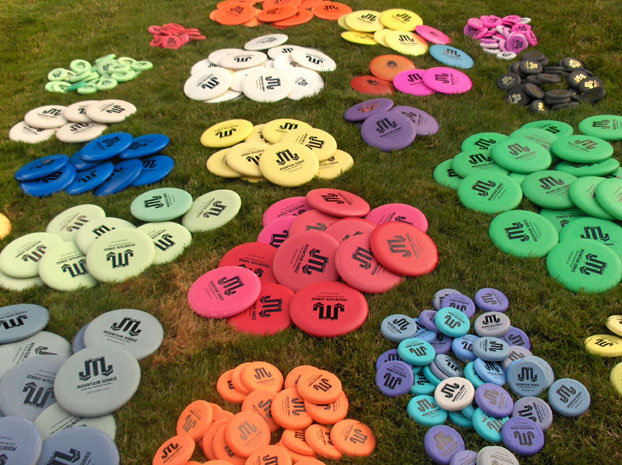

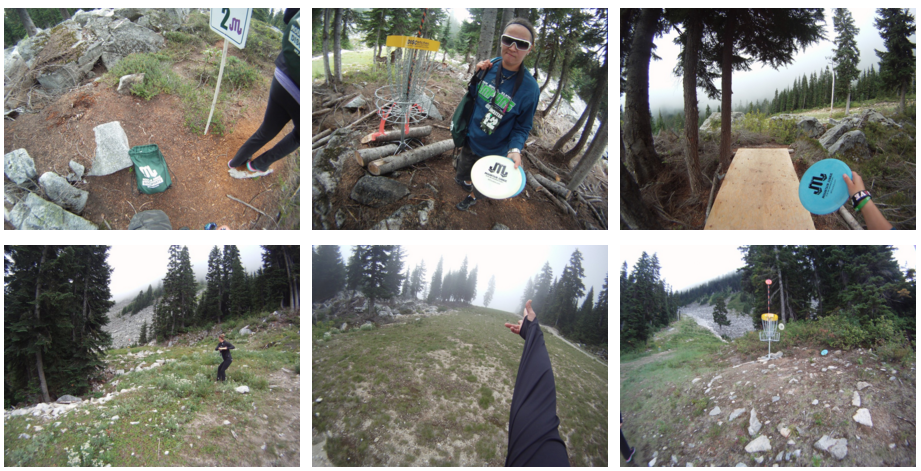
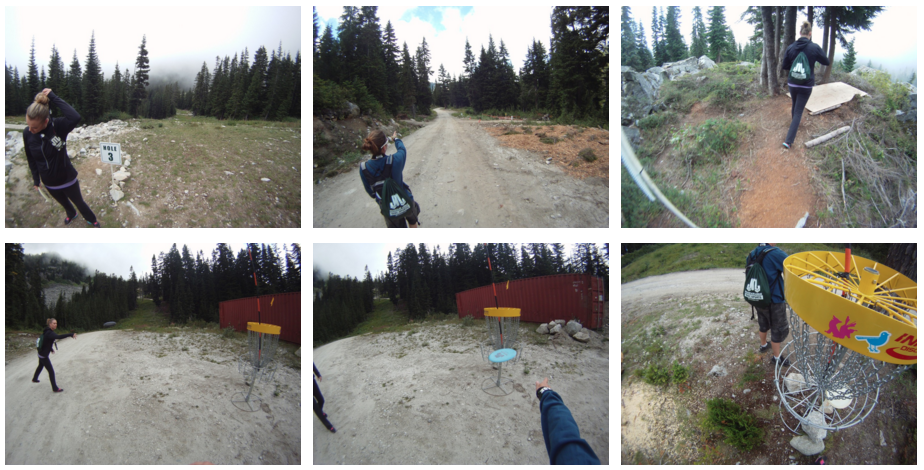
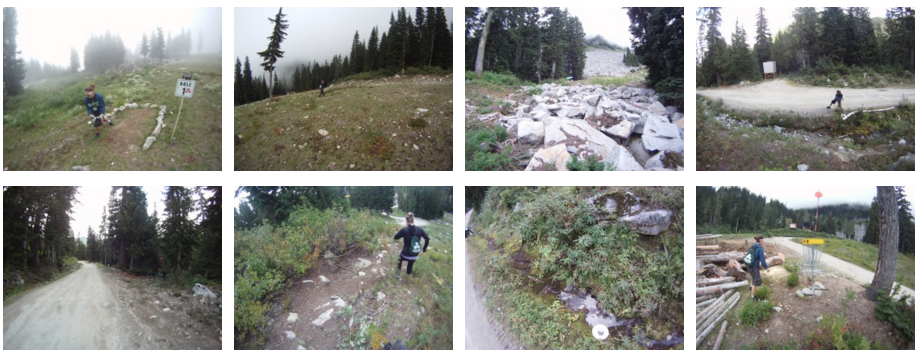


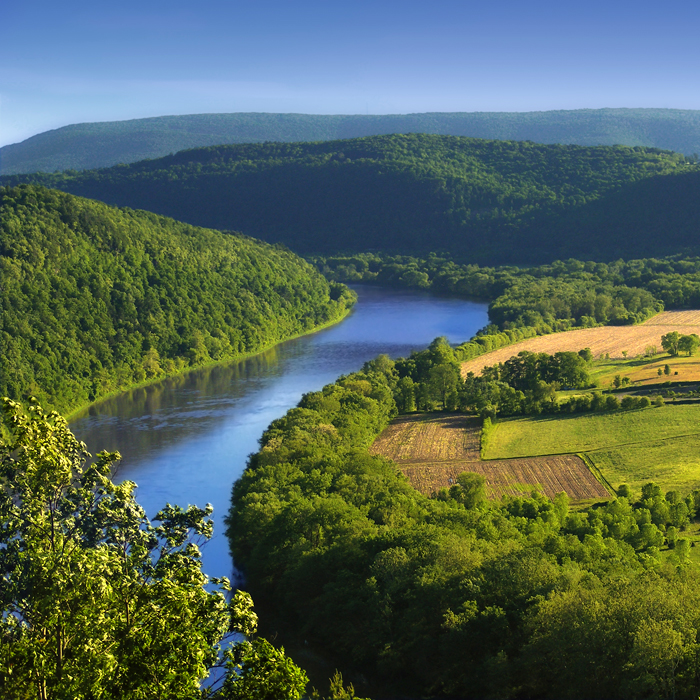



This blog is amazing. I realy love it! johnny